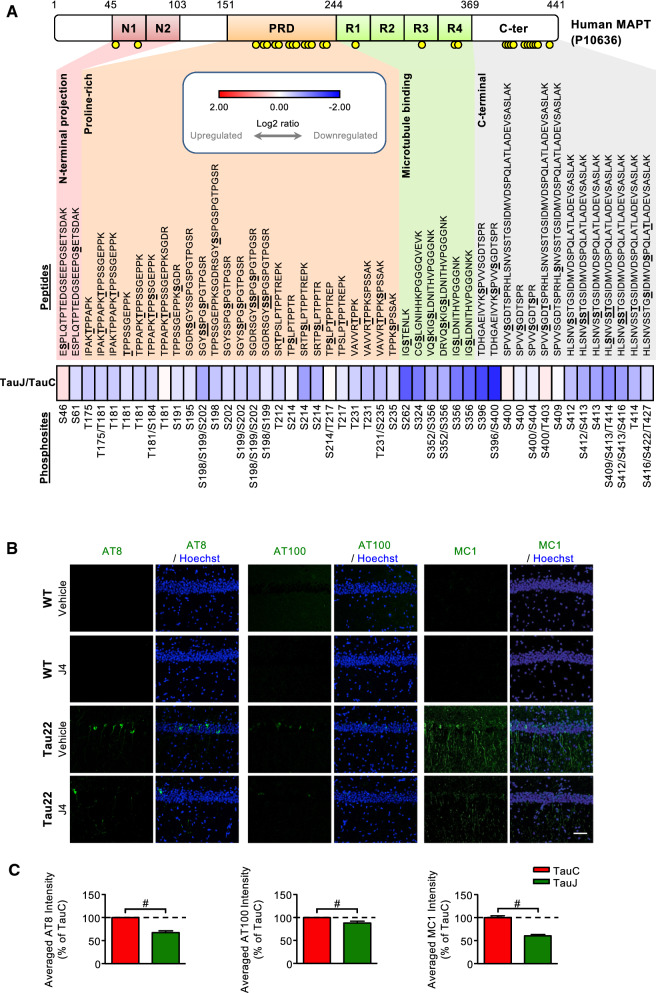Fig. 2.
Chronic J4 treatment decreases hyperphosphorylated and misfolded human Tau levels in the hippocampi of Tau22 mice. Mice were treated as indicated (WTC, black; WTJ, blue; TauC, red; TauJ, green) for 8–9 months from the age of 3 months. a Pooled total hippocampal lysates (200 μg) from 3 animals of the age of 12 months were harvested and subjected to phospho-proteomic analysis. The heatmap shows the relative log2 expression ratio of phosphorylated human tau (MAPT, P10636) in the TauJ group vs. the TauC group. The relative expression level (log2 ratio) of human phosphorylated tau is shown on a scale from red (upregulated) to blue (downregulated). The identified phosphorylation sites on peptides are shown in bold and underlined. b, c Hippocampal sections (20 μm) were prepared from mice with different treatment groups (n = 3–5 in each group) from the age of 3–11 months and subjected to IHC staining. b The levels of hyperphosphorylated tau and misfolded tau in the hippocampus were evaluated by staining with the indicated antibodies (AT8 for Ser202/Thr205, green; AT100 for Thr212/Ser214, green; MC1 for conformational changed tau, green), and the quantification results are shown in (c). Scale bar, 50 μm. The data are expressed as the mean ± S.E.M. #p < 0.05, versus the TauC group, two-tailed Student’s t-test

